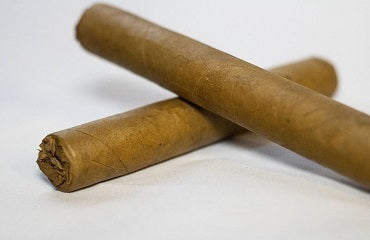
Connecticut Valley has put itself on the map as the motherland of the world-famous Connecticut wrapper – the outer cigar leaf responsible for its noble, authentic flavor.
The history of the Connecticut wrapper started in the middle of the 17th century. It was during this time when the Connecticut River Valley became home to some of the most productive farmlands in the Northeast. Since then, commercial tobacco production has developed dramatically, making the Connecticut wrapper the industry’s ultimate signature shade.
The now-famous Connecticut wrapper exploded in popularity as the tobacco craze began spreading throughout the United States in the countries early history. Soon enough, the Connecticut wrapper, originally meant for the local market only, soon enough had found appreciators among consumers throughout the United States and eventually the world.
Let’s dive into a brief overview of the Connecticut wrapper’s history.
Early tobacco consumption started with the native American population and quickly spread to the European settlers.
Native Americans were already growing and consuming tobacco actively by the time when the first European settlers arrived in the early 1600s. Newcomers decided not to reinvent the wheel and made tobacco-growing their primary occupation in these lands.
That is why a small Northeastern town named Windsor in Connecticut, founded in 1633, instantly became the center of the Connecticut tobacco farming industry.
However, initially, Virginia tobacco was the most desirable tobacco in the early colonies. Even more so than the plant grown in Connecticut. Virginia tobacco was best suited for pipe smoking – the predominant method of nicotine consumption in the early 1600s.
However, the fruitful soil and short, hot Connecticut summers soon enough allowed local farmers to offer an even more desirable tobacco, whose popularity was growing exponentially throughout the country.
Eventually, by the beginning of 1700s, cigars with Connecticut wrappers were sold all over the United States and successfully exported to European ports.
Producing more than 10 million pounds of tobacco per year, Connecticut farmers started experimenting with their seeds and processing techniques. By the beginning of the 18th century, there were a wide variety of cigar manufacturers trying to get more variable products with their unique signature flavors.
In 1875, Connecticut tobacco farmers first planted the new tobacco variety. It has provided the best wrappers one could have found on the tobacco market at that time. Soon enough, it became a stable in the cigar industry, just like a maduro or habano wrapper.
Growing tobacco in the shade produced a cigar wrapper distinct to the Connecticut Valley area.
Connecticut tobacco farmers first started experimenting with growing their tobacco in the shade in the early 1900s. The experiment was particularly successful as shade coupled with the unique climate of the area appeared to provide perfect growing conditions for tobacco. Soon enough, the “shade tobacco” became the Connecticut Valley ultimate trademark.
Connecticut tobacco industry had its ups and downs throughout history. On the one hand, the growing popularity of cigar smoking and the fine quality of Connecticut wrappers constantly increased demand for the product. At the same time, two World Wars and a modernizing labor policy (for example, Connecticut’s 1947 Child Labor Bill, which set age and hourly restrictions on agricultural labor) caused a dramatic shortage in the workforce.
Local farmers found a workaround by the end of the 1940s when Connecticut tobacco manufacturers started hiring Jamaican, Cuban, and Puerto Rican workers. Many of them eventually settled in the area, making a significant impact on the tobacco industry’s local culture, demographics, and development.
The history of the Connecticut Valley lives on around the world as cigars with Connecticut wrappers are now smoked all around the world.
Although the demand for tobacco has slightly declined due to health concerns and the development of cheap mass-consumption wrappers, true appreciators recognize the quality and vibrant flavor that can only result from the historical heritage that Connecticut wrappers carry with them.
Established in 1987, Connecticut Valley Tobacco Historical Society does not only aim to preserve the culture and historical heritage of the local tobacco farming, its impact on the local community and American economy in general, but it carefully collects and preserves the authentic farming and processing technique that have made Connecticut wrappers a signature product and one of the industry’s quality standards.
Connecticut wrapper cigars are now found all over the world - including in South Tampa!
Known for hints of white pepper, lemon, pine, and peanut, Connecticut wrappers have become a staple in nearly every cigar bar around the world. You'll find a wide range of Findy Cigars that are made from a Connecticut wrapper, including Findy Serie 35 Connecticut 6 × 52 and Findy Serie 1980 Connecticut 6 × 54. Explore a wide range of Connecticut wrapper cigars at our store at 5223 S MacDill Ave, Tampa, FL 33611
